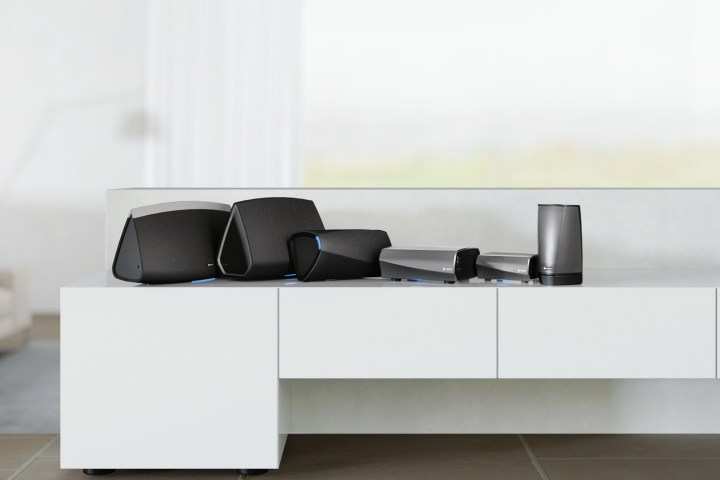
For those who take their audio quality seriously, the most important aspect of the updated product line, dubbed by Denon as HS2, will be the newly added support for high-resolution audio files. Users can now play WAV (PCM), Apple Lossless Audio, and FLAC files at up to 24-bit/192kHz quality either over a network or from USB. DSD and AIFF format support will also be added in a coming update.
Audio quality isn’t the only thing updated in the new HS2 line. Bluetooth support has been added to the original Wi-Fi connectivity, permitting additional flexibility. The hardware itself has seen an overhaul as well, and the platform is now powered by an ARM A9 1.25 GHz Processor with 512 MB of flash memory and 256 MB of RAM.
Initially, the HEOS platform consisted of just three speaker models and a Wi-Fi extender, but it has grown significantly since. The line has expanded to encompass a sound bar, a pre-amp, an amp, and more, but there’s no need to worry about having to replace your existing system. Denon says that users can add HEOS HS2 to existing HEOS systems without issue.
The HEOS app allows the system to be used with iOS, Android, and Fire devices, as well as PC and Mac computers. Music can be streamed from Spotify, Pandora, Tidal, Amazon Music, and a host of other cloud-based music services, as well as from a user’s own network-attached storage (NAS) device.
Current HEOS HS2 models are available from authorized Denon dealers as well as Amazon and Crutchfield, with more models on the way later this year. For more information, see the company’s website.


